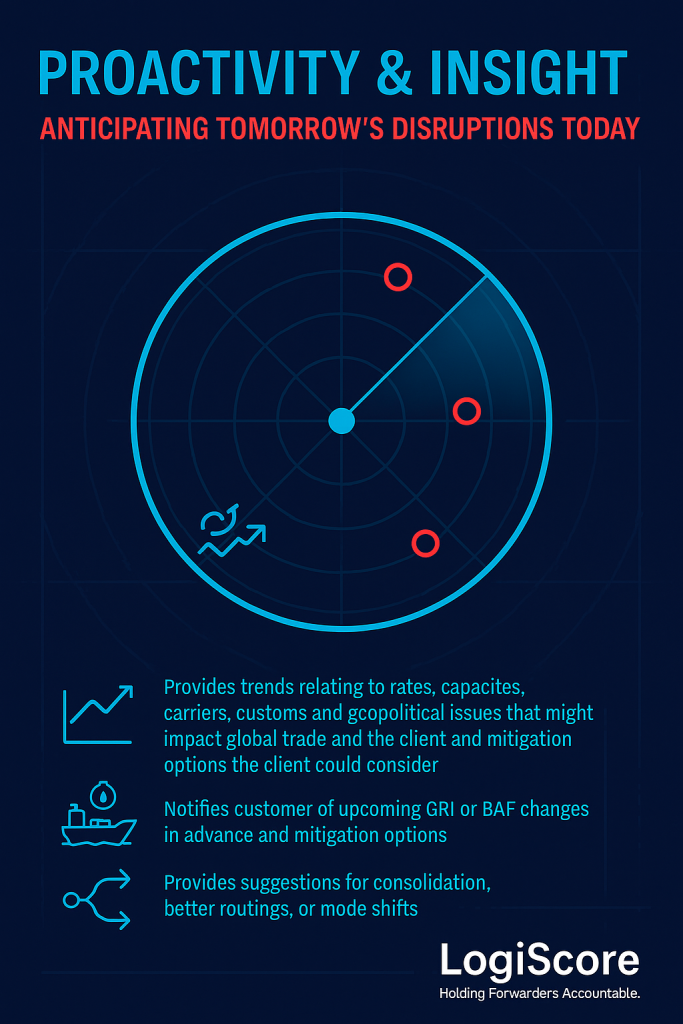Proactivity & Insight: From Reactive Forwarding to Predictive Partnership

In today’s turbulent logistics environment, shippers no longer view freight forwarders as transactional service providers. They expect strategic partners capable of anticipating disruptions, guiding decision-making, and offering actionable insights.
Proactivity & Insight is a defining measure of a forwarder’s maturity. According to McKinsey, companies that integrate predictive supply chain capabilities can reduce costs by up to 15% while improving service levels by 65% (McKinsey, Supply Chain 4.0). Proactive forwarders don’t wait for issues to occur; they forecast, warn, and suggest alternatives well before disruptions impact cargo.
Examples include:
- Market Intelligence: Providing timely analysis of rate trends, capacity shifts, and geopolitical developments that may affect global trade.
- Regulatory Foresight: Notifying customers of upcoming General Rate Increases (GRI) or Bunker Adjustment Factor (BAF) changes—while offering mitigation options such as contract renegotiations, advanced bookings, or alternative routings.
- Operational Optimization: Advising on consolidation opportunities, mode shifts, or improved routings that lower costs and emissions while safeguarding reliability.
DHL’s Global Connectedness Index (2023) highlights that supply chain resilience increasingly depends on foresight and adaptability rather than raw capacity. Similarly, Gartner notes that 79% of supply chain leaders prioritize “insight-driven decision-making” as a top capability for 2025.
In this context, forwarders who consistently deliver foresight build trust and secure long-term partnerships. Shippers want assurance that their logistics partner not only responds to today’s challenges but also prepares them for tomorrow’s.
At LogiScore, Proactivity & Insight is a core scoring dimension, separating forwarders that merely manage shipments from those that safeguard supply chains.
Leave a Reply
You must be logged in to post a comment.